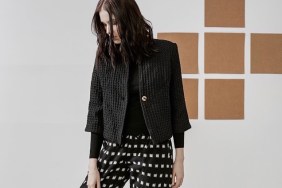
Image courtesy Zady
“Whole Foods, Trader Joe’s and The Fresh Market offer transparency in their own ways. Consumers now demand that when shopping for food in greemarkets too. Ten years ago it was a different story,” Darabi told us in an interview last year.
From its inception, Zady has operated as an e-commerce platform for small, ethically-oriented independent labels like Imogene + Willie (denim), Clare Vivier (handbags) and Sundry (T-shirts). Before signing on a brand, Bédat and Darabi conduct thorough interviews examining the origins and production process that go into every single item.

Image courtesy Zady
And now, Zady is bringing the same level of rigor to a private label. The brand will roll out individual products, starting with a women’s knit wool sweater slated to go on sale in November. This is Bédat and Darabi’s first time wading into the making process themselves, and they were eager to talk about the experience.
Below, we circle back with the Zady founders on the anniversary of their launch to find out what it takes to make a 100 percent ethical sweater.
theFashionSpot: When did you decide to launch a private label?
Maxine Bédat: We had ideas about it right from the very beginning, but we didn’t want to create something that wasn’t needed. But we went out into the market to try to find womenswear that fit the work/life integration lifestyle that we are promoting, that was made with the greatest integrity both for workers and for the environment and at a price point that had value. And we couldn’t find it. That was the direct impetus for launching our own label.
tFS: How did all the production considerations factor into the design process? Where did you start?
Soraya Darabi: We began by identifying the exact product we wanted to create, based on our own research and feedback not only from our team, but from people we hugely respect in the industry. We then worked backwards to determine how would the best version of this product be made, beginning with the highest quality raw materials, the persons constructing the item, the machines on which the product would be made.
We identified designs we thought of as timeless and classic in nature — but elegant and versatile. The goal from day one was to create an “essential” wardrobe staple, without it being basic. We think there is a grand difference between basic and essential.
Like any design house, our vision map began with a mood board, but we have more factors at Zady to take into consideration: As you know, we believe in experts being paid fairly for their hard work and for an item to be made to last. Therefore, we knew we would be making this particular item in the United States. The next question was then: OK, where?
Luckily by standing up for ethical manufacturing processes, over the last year we’ve met a great number of manufacturers who share our vision and align with our mission, and through collaboration with them, a line was born.






